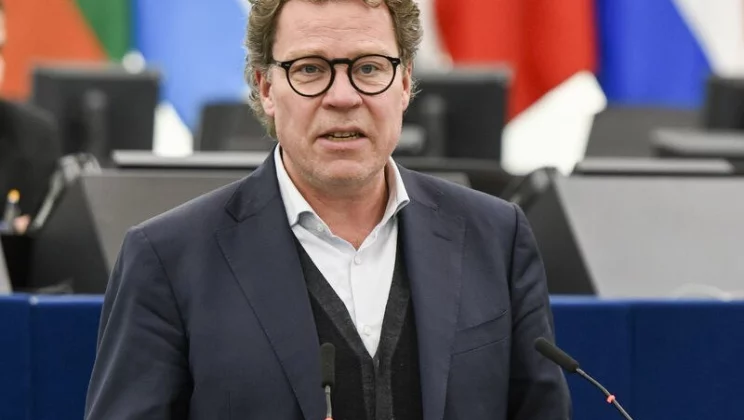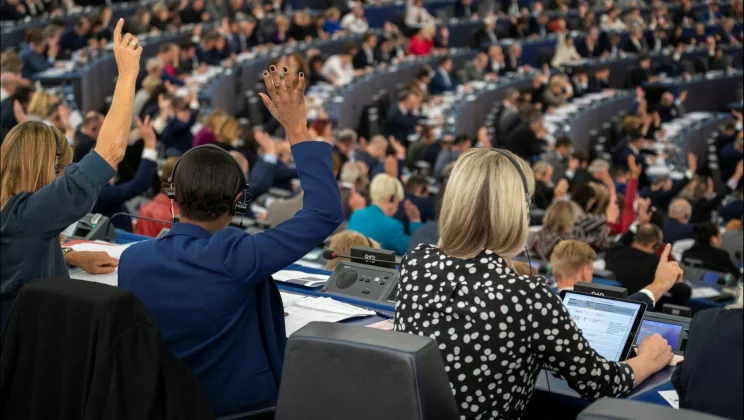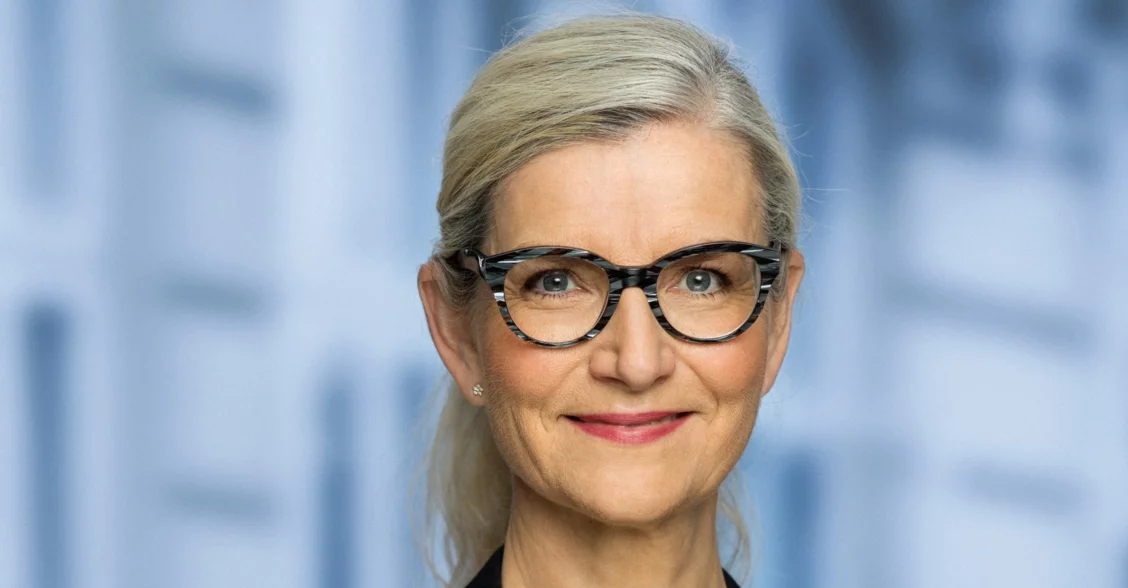“Today, no one questions the vital role of ports as infrastructure,” says EP candidate Ulla Tørnæs, a point of view endorsed by MEP Morten Helveg Petersen. The green transition and the war in Ukraine have highlighted the critical nature of ports and made the EU more inclined to act.
Just three months after Russia’s invasion of Ukraine, Port Esbjerg hosted the North Sea Summit on 18 May 2022, when Ursula von der Leyen, President of the European Commission, met with heads of state from Denmark, Germany, the Netherlands and Belgium.
On the same day, the Commissioners approved the REPowerEU energy initiative.
“The decisions made that day paint a picture of a European Union that acts faster, is more decisive and agile and has adopted a new perspective on ports as critical infrastructure,” says Ulla Tørnæs. Russia’s invasion of Ukraine proved how challenged Europe’s energy supply is when the gas from Russia no longer flows freely.
Ulla Tørnæs has held four ministerial posts, served 24 years in the Danish Parliament and was a member of the European Parliament from 2014 to 2016 and head of the Danish Liberal Party’s delegation. Drawing on that experience, she is now running for the European Parliament as a candidate for the Danish Liberal Party.
She is backed by Morten Helveg Petersen, who has served ten years in the European Parliament for the Social Liberal Party, and, in his capacity as vice-chairman of the Committee on Industry, Research and Energy, he has been heavily involved in and had a major influence on the EU’s offshore wind strategy.
“In my view, there’s no doubt that the pandemic and the war in Ukraine have helped accelerate the pace of the Herculean energy transition. We’ve managed to obtain permits and specific deadlines,” says Helveg Petersen.

Morten Helveg Petersen has seen a significant change in the EU's view on offshore wind over the past ten years in the European Parliament.
Gamechanger for Esbjerg
This has not gone unnoticed at Port Esbjerg. Not only did Port Esbjerg host the European summit, it has also received a grant of DKK 211 million to deepen the port’s fairway from 9.3 to 12.8 metres, enabling even very large ships to enter the port. This is an important step in shouldering the new role as a NATO port. The grant was awarded by the EU infrastructure fund, Connecting Europe Facility (CEF), following a thorough application process.
“This development is a gamechanger for our port and positions us as a critical hub within the Trans-European Transport Network (TEN-T). It’s a testament to the change of attitude that has taken place in Brussels. There’s greater awareness of the importance of stepping up the transition processes, and at the same time, the crucial role of ports is now much more generally accepted,” says Dennis Jul Pedersen, CEO at Port Esbjerg.
Ports are playing an increasingly important role
Evidence that the EU is attaching greater importance to ports is plentiful.
On 24 April 2023, as a member of a select group of businesspeople, Dennis Jul Pedersen attended a meeting with the President of the European Commission, Ursula von der Leyen. The only topic on the agenda was the practical challenges experienced by the industry, potentially jeopardising the ambitious targets of the green transition.
Jul Pedersen was invited to attend the second North Sea Summit in Ostend together with other key businesspeople in the offshore wind industry as well as the heads of state and government and the energy ministers of a large number of countries.
At the summit on 24 April 2023, nine countries signed a declaration setting ambitious targets to build 134 GW of offshore wind by 2030 and over 300 GW by 2050.
At the same time, Port Esbjerg has moved closer to the EU, collaborating with the other members of the WindEurope Ports Platform, a forum where ports are also top of the agenda.
The importance of the ports is evident
According to the two politicians, not only is the EU now more inclined to take action, the importance of ports is also more widely acknowledged by EU decision-makers – a trend that has accelerated in recent years.
“Going back ten to fifteen years, the ports were seen as less dynamic than today. And today, no one questions their vital role as infrastructure,” says Tørnæs.
The ports obviously play a key role in relation to the green transition, but Port Esbjerg’s role as a NATO port has also contributed to increasing the focus on the ports as critical infrastructure.
“Security policy and energy policy have become intertwined since the invasion of Ukraine, so the role of ports has changed in several respects,” says Tørnæs.
Dennis Jul Pedersen is also experiencing great interest and understanding when talking to colleagues and stakeholders around Europe.
“The need to invest in the industry and to support the supply chain to accelerate the pace is widely recognised. The ports are central to many discussions,” says Dennis Jul Pedersen.

With just two months until the European Parliament election and the subsequent selection of a new commission, it is more important than ever that the EU accelerates the green transition.
Still some way to go
Even though things are moving significantly faster, there is still some way to go, according to Tørnæs, who therefore envisages a great burden of responsibility on the shoulders of the next EU Commission.
“In order for us to achieve the targets of the Esbjerg Declaration, the next Commission will need to prioritise offshore wind, the ports and the green transition on a level with the present one. So there’s definitely still some way to go,” says Tørnæs, who is also looking forward to Denmark taking over the EU Presidency in 2025. The Danish government will have the opportunity to promote the most important Danish priorities and show that Denmark takes the lead in the green transition.
“We need to invest in infrastructure, Power-to-X and much more, and if I’m elected, I will work hard for the decisions to do so,” says Tørnæs and continues:
“Offshore wind was practically invented in Esbjerg and therefore holds particular importance to me. We’ve succeeded in moving deadlines forward in the European Union because there is a growing recognition of the need. I’m confident that we can deliver strong results”, says Tørnæs.
Largest project in the history of the European Union
Helveg Petersen is also optimistic about further accelerating the pace and supporting the development at the ports that has gained momentum over the past few years.
As a key negotiator, he was deeply involved in the European climate act, the so-called ‘Fit for 55’ package, which makes it a legal obligation to achieve the climate target of reducing EU emissions by at least 55 per cent by 2030.
“Covering 3,000 pages of legislation, this is the largest project in the history of the EU. Not many people realise how complex it really is,” he says.
At one point, Helveg Petersen said that Denmark has the opportunity to become the wind sheiks of Northern Europe. He still stands by that statement.
“Esbjerg is extremely strongly positioned to play a key role in the huge scaling that will need to happen. The arrow only points one way,” he says.
At the same time, however, grave challenges are looming on the horizon. There is competition from the UK, Germany and the Netherlands. There is still no single market for energy. The industry is still struggling with drawn-out decision-making processes and with an energy network that is not geared for scaling up.
“No one should doubt that the transition will take place. It’s an absolute must for policy-makers. I talk to political colleagues all over Europe on an ongoing basis, and they’re of a similar mind,” says Helveg Petersen.
European colleagues increasingly speaking with one voice is a new phenomenon.
“Ten years ago, offshore wind was regarded as hippie dippy baloney. Not any more,” he says.
Considering what is going to happen in the North Sea, where we will have to break with traditional ideas and lay offshore wind cables crossing national borders, it is clear that we are nowhere near home and dry.
“Far from it. And it won’t happen by itself. If we’re to achieve the 2030 targets, we need to do much more,” he says.
The ports will play a crucial role in this respect.
“No matter how and when we get there, the ports are key and will get even busier. The European Union has picked up the pace, but we need to move even faster. If we’ve walked fast so far, we may need to start running,” concludes Helveg Petersen.
Go to overview

